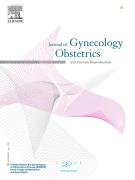Intra partum fever in term pregnancies: Predictive factors of poor neonatal outcome - 04/07/25
 , Charles Egloff a, Justine Raveau c, Laurent Mandelbrot a, b, d, e, Olivier Picone a, b, d, e, Jeanne Sibiude d, e, f
, Charles Egloff a, Justine Raveau c, Laurent Mandelbrot a, b, d, e, Olivier Picone a, b, d, e, Jeanne Sibiude d, e, fAbstract |
Background |
Elevated maternal temperature during labor is common, affecting up to 7 % of women in labor and can be harmful for the neonate.
Objective |
To determine factors predictive of poor neonatal outcomes in case of intrapartum fever in term pregnancies.
Study design |
We performed a single center retrospective study, from January 1, 2020 to June 30, 2022 of parturients ≥ 36 weeks of gestation with intrapartum fever defined as at least one temperature ≥ 38.0 °C during labor. Three groups were compared according to the severity of temperature observed during labor. The primary outcome was any maternal or neonatal characteristics associated with poor neonatal outcome (at least one of the following criteria: 5 min Apgar score < 7, umbilical artery pH < 7.1, acute respiratory distress, neonatal intensive care unit admission, hypoxic-ischemic encephalopathy, suspected early-onset neonatal sepsis).
Results |
The incidence of fever was 3.0 %. Two hundred and thirty-eight patients were included: 106 (44.5 %) had only one temperature between 38.0 and 39.0 °C (“low fever”), 109 (45.8 %) with at least two temperatures between 38.0 and 39.0 °C (“mild fever”) and 23 (9.7 %) with at least one temperature ≥ 39.0 °C (“severe fever”). Fifty-five neonates (23.1 %) had poor neonatal outcome. In univariate analysis, only high maternal fever ≥ 39.0 °C (18.1 % vs 7.1 %, p < 0.05) and early onset fever during labor (41.0 % vs 23.6 % p < 0.05) were associated with a poor neonatal outcome. In multivariate analysis, no predictive factor remained significantly associated with poor neonatal outcome.
Conclusion |
High maternal fever and/or early onset of fever during labor may be associated with poor neonatal outcome.
Le texte complet de cet article est disponible en PDF.Keywords : Fever, Chorioamnionitis, Intrapartum infection, Labor and delivery, Antibiotics, Neonate
Plan
Vol 54 - N° 8
Article 102993- octobre 2025 Retour au numéroBienvenue sur EM-consulte, la référence des professionnels de santé.
L’accès au texte intégral de cet article nécessite un abonnement.
Déjà abonné à cette revue ?

